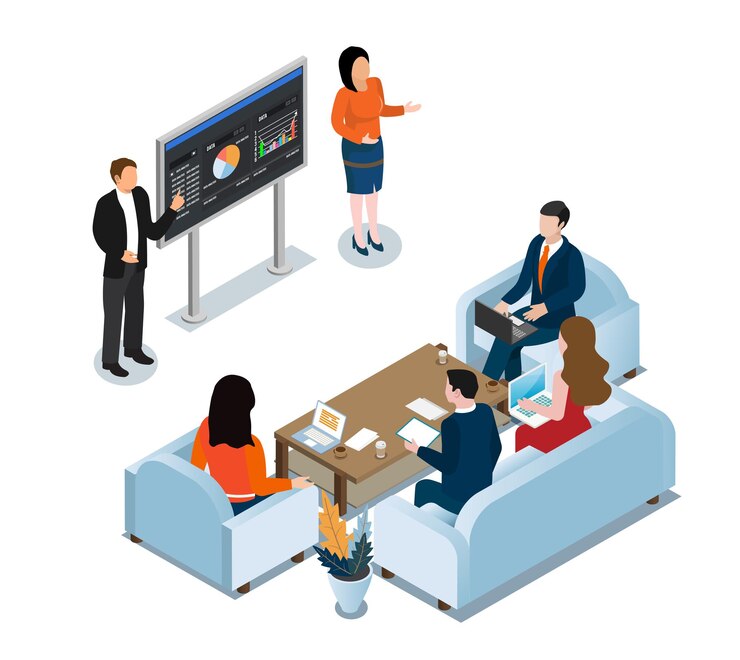Table of Contents
A well-thought-out Virtual Sitting Implementation Project Plan is crucial to ensure the success of your virtual events, meetings, or any online collaborative setup. Whether you are transitioning your traditional meetings into a virtual environment or planning a long-term strategy for remote interaction, a solid project plan lays the foundation for a smooth implementation. This guide will walk you through the essential steps to build an effective plan that addresses both the technical and logistical needs of virtual sitting.
The Virtual Sitting Implementation Project Plan begins with understanding your specific requirements and defining the goals of your virtual sessions. It’s not just about picking the right software or platform, but also ensuring your team is well-prepared and that the technology you choose supports the scale of your needs. In this article, we will dive into the key components that make up a successful virtual sitting plan—from initial planning to post-implementation review.
How to Define Goals and Requirements for Your Virtual Sitting Plan
Defining clear goals for your Virtual Sitting Implementation Project Plan is essential. Without a clear vision, the project may not meet expectations. Start by asking questions like, “What do we want to achieve from this virtual sitting?” Whether it’s an online conference, a virtual meeting, or an educational session, your goals should be the foundation of the plan.
The requirements for your project will depend on these goals. If you want to host a large conference, you may need more advanced technology, like a stable video conferencing platform and powerful internet bandwidth. Knowing these details in advance will make the planning process easier and more effective.
Choosing the Right Technology for Your Virtual Sitting Setup

Choosing the right tools and platforms is crucial for your Virtual Sitting Implementation Project Plan. The technology you choose will affect the success of your project, so take your time. Start by researching different video conferencing platforms that match your needs, whether you need features like screen sharing or breakout rooms.
Consider factors like ease of use, reliability, and security. For example, platforms like Zoom, Microsoft Teams, or Google Meet are popular because they offer robust features. You should also make sure that your team knows how to use the technology and that everything works properly before going live. Testing is key to ensuring there are no issues during the actual event.
Building a Timeline for Successful Virtual Sitting Implementation
Creating a timeline is a must in any Virtual Sitting Implementation Project Plan. A timeline helps organize tasks and ensures that everything happens on time. Start by breaking down the project into smaller tasks, from initial planning to the final review. Assign deadlines to each task, making sure you give enough time for testing and preparation.
Your timeline should also allow room for any unexpected challenges. If you’re working with a team, make sure everyone knows what they need to do and when. Clear communication will help avoid delays and ensure that everyone stays on track. The more organized your timeline is, the smoother the entire project will run.
Key Roles and Responsibilities in a Virtual Sitting Project Plan

Every project needs a team with clear roles and responsibilities, and a Virtual Sitting Implementation Project Plan is no different. Identifying who is responsible for what will help the project run smoothly. Start by deciding on the roles needed, such as event coordinator, technical support, and content creator.
Ensure that each team member understands their responsibilities and deadlines. For example, the technical support team should ensure that all equipment is working before the event, while the event coordinator should handle communication with participants. A well-organized team can make the planning and execution process much easier.
Addressing Potential Challenges in Your Virtual Sitting Plan
Every Virtual Sitting Implementation Project Plan will face challenges, but being prepared can help. Some common problems include technical difficulties, connectivity issues, or even team members not being available on time. Anticipating these challenges and having backup plans in place is key to managing any situation.
One solution is to do multiple test runs before the actual event. This allows you to identify and fix any problems in advance. Another tip is to have a tech support team on standby during the event to handle issues quickly. The better prepared you are, the less likely challenges will disrupt the flow of the event.
Testing and Quality Control in Virtual Sitting Implementations
Testing is an essential step in your Virtual Sitting Implementation Project Plan. Before launching your virtual event, ensure everything works as expected. Start by running through all the features of your chosen platform, checking that video, audio, and screen sharing are functioning properly.
It’s also a good idea to test with a small group to see how everything works in real time. This helps you spot any technical issues early and gives you time to fix them. Quality control should be a top priority, as it can make the difference between a successful event and a disappointing one.
How to Scale Your Virtual Sitting Plan for Larger Audiences

When you need to scale your Virtual Sitting Implementation Project Plan for a larger audience, you have to consider both technology and logistics. Scaling might involve upgrading your platform to handle more participants or adding more team members to manage the event smoothly.
Some helpful tips for scaling include using a cloud-based platform that can grow with your needs. Additionally, test the platform’s capabilities with a larger group before the actual event to make sure it can handle the traffic. Scaling requires more planning, but it’s achievable with the right tools and a solid plan.
Post-Implementation Review: Optimizing Your Virtual Sitting Project Plan
Once your virtual sitting is complete, it’s time for a post-implementation review. This step is crucial to improve future projects and make adjustments to your Virtual Sitting Implementation Project Plan. Start by gathering feedback from participants and team members about their experience.
Review the entire process to identify areas of improvement. Did the technology work as expected? Were there any challenges that could be avoided in the future? Use this information to fine-tune your plan for future virtual sittings, ensuring that each project gets better and more efficient.
Subheadings for Post-Implementation Review
- Gather Feedback from Team and Participants
- Analyze the Success of Technology and Tools Used
- Implement Adjustments for Future Projects
Conclusion
Creating a Virtual Sitting Implementation Project Plan is key to making sure your virtual events go smoothly. By taking the time to plan everything carefully, from setting clear goals to choosing the right technology, you can avoid common mistakes and ensure success. Don’t forget to test everything in advance and have backup plans ready for any problems that may come up. With the right planning, your virtual meetings or events will be much more effective and enjoyable.
Remember, the more you focus on each part of your plan, the easier it will be to manage everything. Whether it’s handling a small meeting or a large virtual conference, having a good plan will make all the difference. Keep improving your plan after each project by learning from what worked well and what could be better. This way, you’ll keep making your virtual sittings even better each time!
FAQs
Q: What is a Virtual Sitting Implementation Project Plan?
A: A Virtual Sitting Implementation Project Plan is a detailed guide that helps organize and manage virtual events, meetings, or conferences, ensuring everything from technology to team roles is planned and executed smoothly.
Q: Why is a timeline important in a Virtual Sitting Project Plan?
A: A timeline ensures that tasks are completed on time, helping keep the project organized. It prevents delays and ensures that every step, from planning to testing, is done efficiently.
Q: How do I choose the right technology for my Virtual Sitting Project?
A: Choose technology based on your goals, audience size, and needed features like video sharing or breakout rooms. Well known choices incorporate Zoom, Google Meet, and Microsoft Groups.
Q: What should I do if technical problems arise during a virtual sitting?
A: Have a tech support team on standby and run multiple tests before the event to identify any potential issues.Continuously have contingency plans on the off chance that something turns out badly.
Q: How can I scale my Virtual Sitting Project for a larger audience?
A: Use a platform that supports larger audiences and test it beforehand to ensure it can handle the traffic. You may also need to add more team members to manage the event smoothly.
Q: How do I review and improve my Virtual Sitting Project Plan after an event?
A: Gather feedback from participants and team members, analyze what worked well and what didn’t, and make adjustments to improve the planning process for future virtual sittings.
